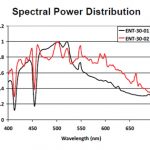In the deepest and darkest regions of your console, a demon exists that some will never dare to battle. In a place where many fear to tread, it has been cursed and reviled by many would-be heroes. In the beast’s lair, the measurement of the fourth dimension takes on an uncanny accuracy oth-erwise unknown to many humans. The periods known as Hours, Minutes and Seconds are joined by a unit of diabolical accuracy known as the Frame. In the annals of lighting lore, only the truest and bravest of programmers live to tell the tale of their crusades against this mighty foe. The fiend is called timecode, and this is one of those tales.
Once Upon a Time, There Was an Ice Show
I recently spent two weeks in the wintry wonderland of Lake Placid, N.Y. I was there to program the console for a figure skating show that will tour the country in 2008, knowing very little about the production and having never worked with the designer. A friend who knew I had experience dealing with timecode on the specified board referred me. Nevertheless, he cautioned me that there would be a lot of timecode involved.
Once I arrived on site, I learned a bit more about the setup of the show. The two-act performance consisted of roughly two-dozen pieces of prere-corded music. The audio department would play all of the music back, with timecode sent to the lighting console by the audio playback device.
The designer, Errol Reinart, was a highly accomplished programmer and knew exactly the challenges I would be facing. He emphasized that he did not care how the console was set up, but that there were certain things it must do on tour. The show had to run almost autonomously, requiring minimal human input to play back incredibly detailed and complex cueing night after night. Most important, the show would not always run in the programmed order, yet it was imperative that it could jump cleanly from song to song, no matter what the required order would be.
…And When the Dust Settled, the Hero Saw a Series of Numerals, Slashes and Dots
Timecode is a coded signal used to synchronize various types of electronic devices. While there are many specific types and formats, they all do similar jobs for us. By providing a reference signal that is perfectly repeatable, timecode allows us to synchronize lighting cues to a specific mo-ment in an audio track. Once we’ve programmed the console to do it once, it can perfectly repeat that cue every time.
In this case, the audio technician for the show had “striped” a timecode track onto an audio channel side-by-side with the music for the show. This audio channel was fed into the timecode port on the lighting console, allowing it to “see” exactly the same timecode every time a song was played. Once a cue was assigned to a specific place in the timecode, the cue would fire every time the console saw that time signature.
Each music track was purposefully allocated a 10-minute block of timecode to ease the organization and documentation of the show and to allow room for any future edits to the audio. So, from day one, we knew that the first song in the show would start at zero hours, 10 minutes, 2 seconds, and 0 frames, which can also be expressed like this: 00:10:02:00. The second song started at 20 minutes 2 seconds (00:20:02:00), and the third started at 30 minutes 2 seconds (00:30:02:00). I think you’re seeing the pattern.
As we programmed sections of each song, we recorded timecode to the cues. By putting the console into a timecode record mode and playing back the cues manually with the music playing, we were able to record approximate timecode values for each cue. Then, we manually adjusted each cue to fire at the exact moment the designer wanted. Many of the cues were adjusted to a single frame of accuracy to accentuate musical elements such as individual notes and cymbal crashes.
Living to Tell the Tale, Again and Again and Again and…
With well over 1,000 cues in the primary cue list, a scant half-dozen will be fired manually on a nightly basis. Programming a show like this takes patience and perseverance, as manipulating and weaving timecode to be frame-accurate can be a trying experience. To work at this detailed level requires an expert understanding of how your console deals with timecode. While the general concepts remain the same in all cases, there are help-ful tricks and deadly pitfalls on every platform.
With the proper understanding, timecode can become an valuable weapon in your arsenal. So, whether it’s a theme park ride, a rock spectacle or a touring ice show, go forth and be not afraid. Because, as it turns out, timecode is not your adversary, but one of your fiercest allies.
Phil Gilbert is a freelance lighting designer and programmer. When he’s not in the depths of timecode purgatory, you can reach him at pgilbert@ plsn.com.
